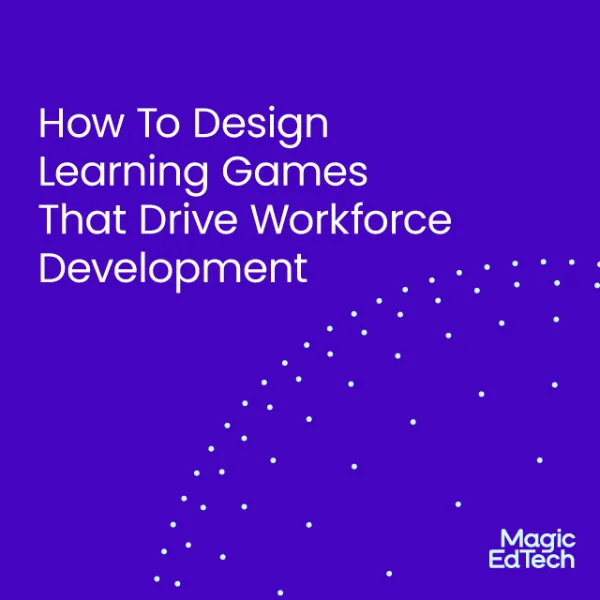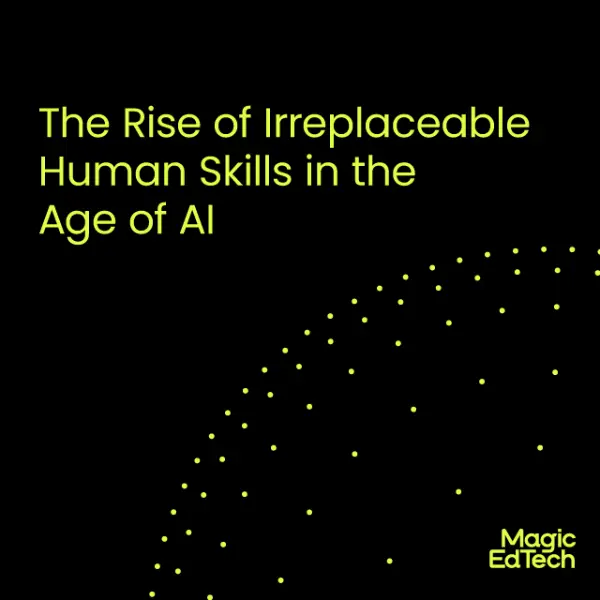How ‘Learning On-the-Go’ Education Transforms the Corporate Landscape
- 30 January, 2024
- Reading Time: 5 mins
Education is not about thinning the herd. Education is about helping every student succeed.
– Andrew Ng
There is a greater need now than ever before to upskill and reskill staff to stay in tune with changing business requirements. However, while corporate learning is pivotal for organizations, and employees, it takes time and resources. Also, preferences and pace of learning are different for all. In a world, where inclusivity, accessibility, and personalization are changing how services are delivered, a one-size-fits-all model does not work. Hence, while corporate learning is pivotal for growth, organizations must also provide employees with avenues for discovering what it is that they would like to pursue, along with the privacy or space for learning in their own time. What better way to facilitate this than through mobile learning platforms that enable learning on the go?
Going From Workshops and Instructor-Led Training (ILT) to “Learning on the Go”
Until a couple of decades ago, workshops and instructor-led training (ILT) were the most popular kind of training imparted to employees. This kind of training commonly occurs in a training room, typically in an office, classroom, or conference room, and relies on one or more instructors. They teach skills or material to another person or group through lectures, presentations, demonstrations, and discussions. However, there were multiple issues associated with them:
1. It does not elicit high levels of user engagement.
2. The learning was retained for a lesser duration.
3. Loss of manpower and productive work hours.
As mobiles became common, a newer model emerged – Learning on the Go.
What is Learning on the Go?
Learning on the Go refers to the individual’s ability to acquire knowledge or skills in a flexible and mobile manner, using smartphones or tablets, which has become quite common nowadays in the Gen Z crowd, who are mobile natives and are quite comfortable with online learning. But it is not just Gen Z, even experienced employees, benefit from the convenience of learning on the go:
- They can learn anywhere, anytime.
- They access educational content or training materials while on the move or during moments that were traditionally non-learning, such as commuting or waiting.
- Learning is not fixed or time-bound, and hence the ability to engage in educational activities outside of traditional classroom settings.
- Keeps employee morale high and promotes continuous learning.
- Adheres to the principles of adaptability, inclusivity, and accessibility in various environments.
Organizational benefits
It is not just the employee who is empowered, even the organization reap multiple benefits.
- It is flexible in terms of pace.
- It is less expensive than workshops and traditional means of training or upskilling.
- It is convenient for the business that does not lose key manpower on days training is scheduled.
- It is the best way to keep employees informed and updated with the latest.
- And as it keeps the employee morale high, they are less likely to leave.
Promoting Learning on the Go – The Three Pillars
Learning is not about thinning the herd. It is about making them more empowered. Here are the three pillars that facilitate learning on the go by organizations:
1. Investing in micro-credentials or bite-sized learnings
Micro-credentials are the next big thing. Nowadays, two out of every five working Americans proudly possess at least one non-degree, post-secondary credential. Nano degrees or micro-credentials can be significant revenue generators. The market size is projected to increase from $2.31 billion in 2023 to $4.40 billion within the next five years.
Several compelling advantages accompany the decision to invest in micro-credentials:
- Micro-credentials facilitate quicker and more efficient learning experiences. As the demand for upskilling and reskilling grows, the agility of micro-credentials becomes a valuable asset, allowing individuals to acquire relevant knowledge and skills in a shorter time frame.
- For organizations, micro-credentials present one of the swiftest and most reliable means to address the reskilling needs of their workforce. This ensures that employees stay abreast of evolving market demands, fostering a workforce that remains competitive and adaptable.
- Micro-credentials excel in promoting targeted learning. In a market characterized by specific demands, these bite-sized learning opportunities empower organizations to align their training initiatives with the precise skills required. This is particularly beneficial in areas such as data analytics, data science, leadership capabilities, project management expertise, Gen AI proficiencies, and more.
2. Enabling personalized learning paths
Learning on the go model leverages the power of rules-based, AI/ML-driven algorithms.
- The content is highly personalized and uses smart tech like gamification, VR, and AR to increase user engagement.
- It provides easier access to learning modules and courses via portable devices like smartphones and tablets, even on the move.
- Learners can choose when and where to engage with learning materials, providing flexibility to adapt to their schedules and preferences.
3. Providing interactive and engaging content leveraging tech
Engagement strategies such as gamification, quizzes, and interactive elements organizations can ensure higher levels of user engagement and motivation. Further, with AI and ML, it becomes possible for organizations to track the progress and performance of employees, and find out where they falter.
Sail Into a Future of Empowered Minds
Whether it is the Commonwealth of Learning’s Learning for Farmers initiative or Magic EdTech’s enablers that are powered by the unassailable patience of our EdTech team to understand what is required to facilitate true learning on the go. There is no doubt that the Learning on the Go model stands out as the ideal approach for on-the-go e-skilling and upskilling. To cognify learning with DeepSight AI that Magic EdTech’s in-house framework for human-centric Al. DeepSight comprises tools, services, accelerators, and consultations that organizations can use to build their AI-enabled solutions, safely and responsibly, or build learning solutions with custom platform development, experiential learning solutions, accessible and immersive learning content for everyone, everywhere that transforms Edtech, and full-fledged team for cloud support, managed services, content operations, etc. With so much and more – Come discover the world of transformative learning with us!






